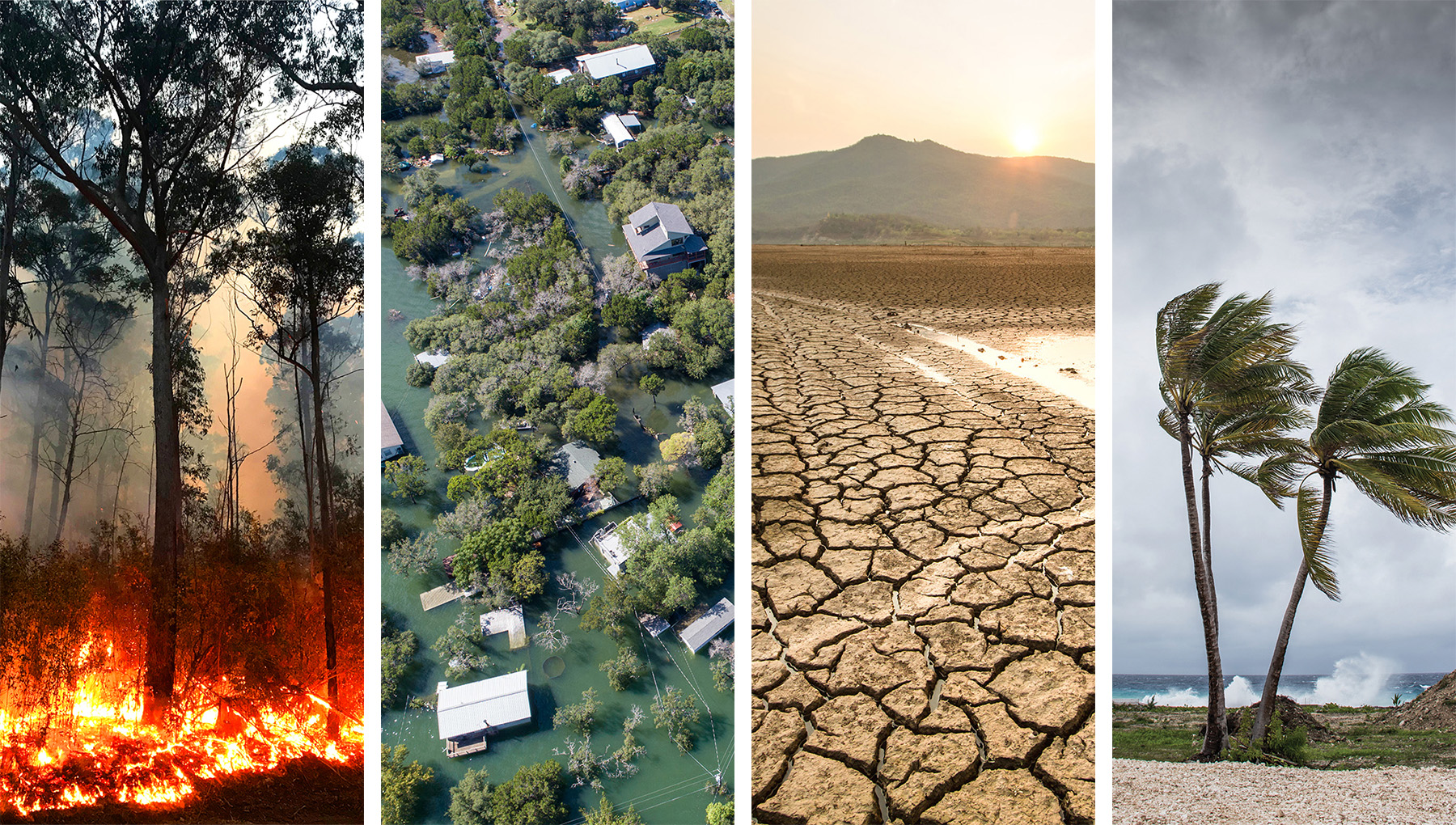Climate change is driving an increase in extreme weather events around the globe. From devastating floods to record-breaking heatwaves, the impacts of a warming planet are becoming increasingly apparent. Here’s how climate change is intensifying these phenomena in 2024.
1. More Extreme Rain
As the planet warms, the atmosphere can hold more moisture. For every 1°C increase in temperature, the atmosphere’s moisture capacity increases by about 7%. This results in more droplets forming and heavier rainfall over shorter periods and smaller areas.
In April 2024, Dubai and surrounding regions experienced unusually heavy rainfall, an event that is becoming more common. Although heavy rain in this area is rare and hard to directly attribute to climate change, such events have become 10-40% heavier. Similarly, extreme flooding hit parts of East Africa in the same month. While it’s early to determine the exact role of climate change in this specific event, previous heavy rainfall in the region has been linked to both climate change and the Indian Ocean Dipole phenomenon.
In September 2023, northern Libya was devastated by flooding that the World Weather Attribution (WWA) group found to be up to 50 times more likely due to climate change. This highlights a broader trend: globally, heavy rainfall events are becoming more frequent and intense because of human activities, according to the Intergovernmental Panel on Climate Change (IPCC).
2. Hotter, Longer Heatwaves
Even a slight increase in average temperatures significantly affects heat extremes. Higher average temperatures shift daily temperature distributions, making hot days more frequent and intense.
In early April 2024, Mali experienced an extreme heatwave with temperatures hitting 48.5°C, linked to increased hospitalizations and deaths. This extreme heat would have been impossible without human-caused climate change, according to the WWA. As the world continues to warm, such heatwaves will become more common.
In May 2024, some areas in India recorded temperatures as high as 48-49°C, causing widespread distress and health issues. This level of heat is unprecedented and is becoming increasingly common due to climate change.
In July 2022, the UK recorded temperatures above 40°C for the first time, a scenario that would have been extremely unlikely without climate change. Heatwaves in the UK are also becoming longer, exacerbated by phenomena like heat domes, where high pressure traps hot air over large areas. One theory suggests that rapid Arctic warming, which is happening nearly four times faster than the global average, is slowing the jet stream, increasing the likelihood of heat domes.
3. Longer Droughts
While linking specific droughts to climate change is complex, rising temperatures exacerbate drought conditions by drying out soils more quickly. This leads to more intense heat and prolonged periods of drought.
From 2020 to 2022, East Africa suffered its worst drought in 40 years due to five consecutive failed rainy seasons, displacing 1.2 million people in Somalia alone. According to the WWA, climate change has made such droughts at least 100 times more likely. Similarly, the Amazon rainforest experienced its worst drought in over 50 years in the latter half of 2023, driven mainly by human-caused warming.
4. More Fuel for Wildfires
While wildfires occur naturally in many regions, climate change is creating conditions that make wildfires more likely and more severe. Prolonged heat draws moisture out of soils and vegetation, creating tinder-dry conditions that fuel wildfires.
Canada faced its worst wildfire season on record in 2023. The WWA found that climate change more than doubled the likelihood of the extreme “fire weather” conditions that helped these fires spread. Rising temperatures may also increase the frequency of lightning strikes in northern forests, further igniting wildfires. According to the UN Environment Programme (UNEP), the number of extreme wildfires is projected to increase by up to 50% by 2100 due to the combined effects of climate change and land use changes.
Conclusion
Climate change is amplifying extreme weather events worldwide. Rising temperatures, altered rainfall patterns, and conditions conducive to wildfires and droughts pose severe challenges to our environment and communities. Addressing climate change is crucial to mitigating these impacts and safeguarding our planet’s future.



